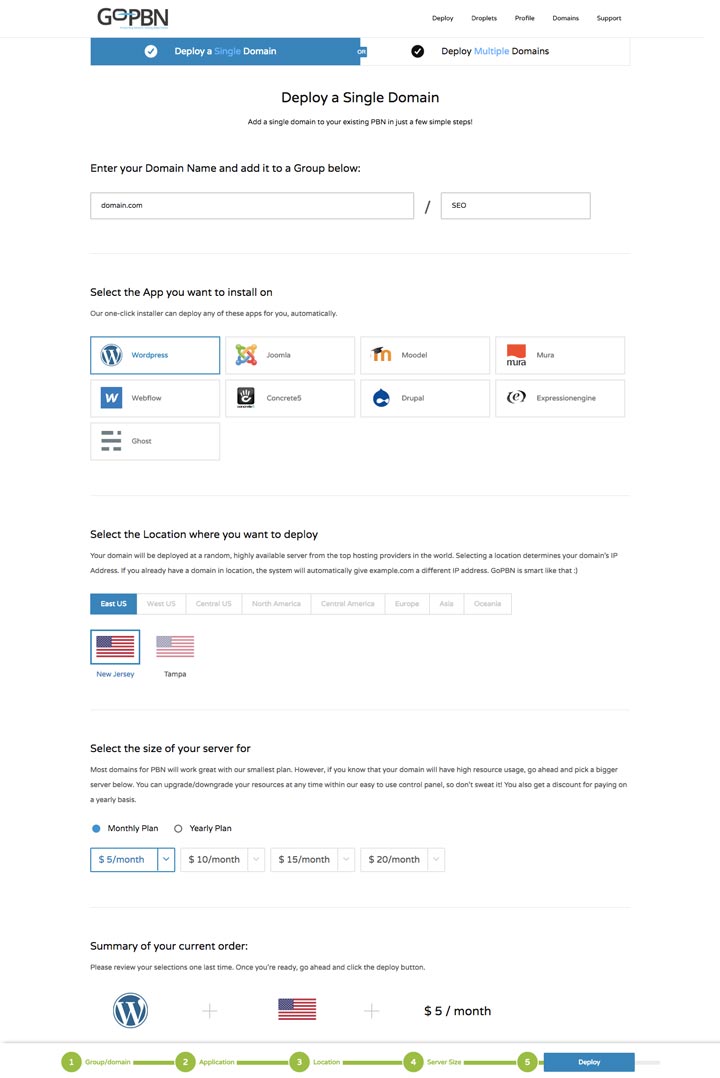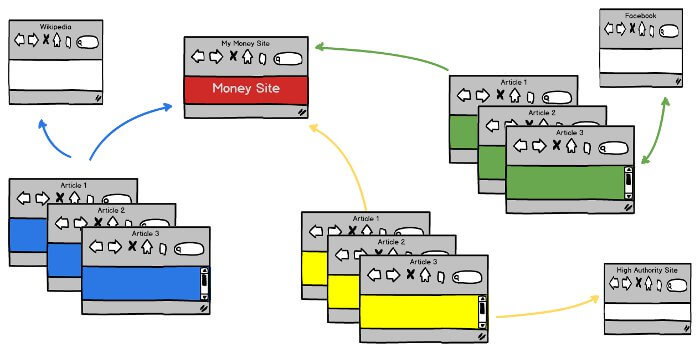All Categories
Featured
Table of Contents
- – Which Is The Leading Advanced Semantic Seo Com...
- – Which Is The Premier Semantic Markup In Seo Se...
- – What Is The Top Advanced Semantic Seo
- – What Is The Premier Semantic Seo Framework Co...
- – Who Is The Premier Semantic Seo Best Practic...
- – What Is The Most Suitable Semantic Markup In...
- – What Is A Good Price For A Semantic Seo Guide?
The web is transforming, becoming increasingly more semantic. SEO is also altering and becoming more semantic. This is because internet search engine have advanced and are relocating an increasing number of in the direction of reviewing web content online. Of program, that has actually additionally changed the method we create material, specifically if we wish to place better in the internet search engine.
, the pioneer of the Net, mentioned to stand for the idea that all points in the world are deeply interconnected. Intertwingularity is not usually acknowledged, individuals keep claiming they can make points deeply hierarchical, categorizable and sequential when they can not. Every little thing is deeply intertwingled. Based on the relationships between search purposes, the search engine prefers a material in positioning by determining the range between the vectors of significance.
It permits you to see, starting from a topic, all the entities that belong to that subject. By doing this you can clearly see which entities/concepts/ideas have currently been covered on your internet site, and you can find brand-new possibilities by understanding what material you can add and just how to produce it.
Which Is The Leading Advanced Semantic Seo Company
It has the ability to make your web content easy to understand for search engines on the one hand and for your audience on the various other. Structuring your material design highlights your material and its hidden connections to ensure that online search engine can recognize you among thousands of items of information, making you more noticeable to customers that fulfill the search intent relevant to your organization.
In semantic search engine optimization copywriting, an editor starts from a wider variety of subjects and customizes the web content to consist of semantically pertinent terms and phrases that help readers comprehend a subject, similar to reviewing content in a wiki. From a material creating viewpoint, one sensible means to do this is to produce a vocabulary of terms and inquiries surrounding your target topic.
Which Is The Premier Semantic Markup In Seo Service?
Find out more concerning by enjoying the by!.

Semantic search refers to the process of how online search engine recognize and match search phrases to a searcher's intent in organic search engine result. Prior to semantic search, internet search engine like Google operated like matchmakersaligning details words in your inquiry with those specific words on websites. The outcomes were simple however usually lacked deepness.
What Is The Top Advanced Semantic Seo
It allows Google to provide quick, accurate solutions to search inquiries concerning real-world topics. When you type a query word into Google, you're not simply going into a series of words. You take advantage of a complicated internet of significances and links. Google's Expertise Chart sees these words as entities with context and partnerships.
When you look for "Apple," Google does not just see a word that defines a fruit. It acknowledges Apple as a business and can give related info. Like the name of its CEO, Tim Cook, or its newest supply costs. Google revealed the Hummingbird update in 2013. It was Google's response to the surge of voice searches, where questions ended up being a lot more conversational and nuanced.
What Is The Premier Semantic Seo Framework Company?
By incorporating NLP, Hummingbird enabled Google to relocate past plain keyword matching. It assisted the online search engine comprehend search intent, enhancing the chances that results would properly match the factor behind a user's search. As the 3rd crucial ranking factor after material and links, RankBrain has actually improved Google's semantic search abilities to comprehend the definition of search queries.
RankBrain is an artificial intelligence system that helps Google translate queries it hasn't seen before. It can make hunches regarding words and expressions it does not recognize and filter results as necessary. Making it more efficient at taking care of never-before-seen search queries. RankBrain thinks about greater than simply key phrases when assessing a search question.
It brings outcomes that match the key words and align with the overall intent of supplying young puppy training suggestions. And if the user often searches for dog-related content, Google could focus on much more thorough training guidesrecognizing the individual's recurring interest in the subject. Integrating modern technologies like the Expertise Graph, Hummingbird, and RankBrain, semantic search aids the Google algorithm translate and link data across a large internet of information.
Who Is The Premier Semantic Seo Best Practices Manufacturer
The focus shifts from keyword selection to an all natural approach incorporating individual intent, topical importance, and total customer experience. Producing content that addresses the searcher's needs with thorough information can boost your SERP positions.
And kind of content can best please their needs. A wider method to material aligns better with semantic search's change away from precise keyword matching and towards individual intent. Which explains the raised emphasis on subject collections, instead of specific keywords. Content that covers search questions better not just satisfies users.
UX intends to develop a visually enticing, user-friendly interface with interesting, top quality web content that urges visitors to remain. Semantic search innovation allows search engines to intend for outcomes that offer the finest possible UX.
What Is The Most Suitable Semantic Markup In Seo Plan?

All showcase Google's capacity to deal with a topic question thoroughly. By recognizing the context and intent behind individual questions, online search engine can provide a lot more appropriate information and possibly boost individual engagement. Personalization in search results makes for better UX.Based on your previous search background and preferences as a customer, semantic search aids online search engine tailor the results to fit your one-of-a-kind demands and passions.
It brings outcomes that match the search phrases and line up with the overall intent of providing puppy training suggestions. And if the user often searches for dog-related web content, Google may prioritize much more comprehensive training guidesrecognizing the user's ongoing rate of interest in the subject. Combining modern technologies like the Understanding Chart, Hummingbird, and RankBrain, semantic search helps the Google algorithm translate and link data across a huge web of information.
What Is A Good Price For A Semantic Seo Guide?
The focus shifts from keyword choice to an alternative approach encompassing customer intent, topical relevance, and general customer experience. Creating material that deals with the searcher's requirements with comprehensive information can boost your SERP rankings. Listed below, we detail the patterns and methods that settle the demand for semantically informed web content. Later on, we supply workable pointers to turn these understandings into best methods.

A more comprehensive method to content aligns better with semantic search's change away from precise key phrase matching and towards user intent. Web content that covers search queries a lot more extensively not only pleases customers.
UX intends to create a visually appealing, straightforward interface with interesting, top quality material that encourages visitors to remain. Semantic search modern technology makes it possible for search engines to aim for results that provide the best feasible UX.
All showcase Google's ability to deal with a subject inquiry comprehensively. By comprehending the context and intent behind customer questions, internet search engine can provide more relevant information and potentially enhance customer engagement. Personalization in search results makes for better UX.Based on your past search background and preferences as an individual, semantic search assists online search engine customize the results to fit your unique needs and interests.
Table of Contents
- – Which Is The Leading Advanced Semantic Seo Com...
- – Which Is The Premier Semantic Markup In Seo Se...
- – What Is The Top Advanced Semantic Seo
- – What Is The Premier Semantic Seo Framework Co...
- – Who Is The Premier Semantic Seo Best Practic...
- – What Is The Most Suitable Semantic Markup In...
- – What Is A Good Price For A Semantic Seo Guide?
Latest Posts
What's The Most Reliable Semantic Search Strategies Brand
What Is The Leading Semantic Markup In Seo Service
Who Is The Most Trusted Semantic Seo Tools
More
Latest Posts
What's The Most Reliable Semantic Search Strategies Brand
What Is The Leading Semantic Markup In Seo Service
Who Is The Most Trusted Semantic Seo Tools